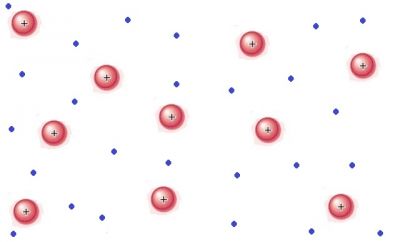The Universe is
made of a fixed number of elements that form all kinds of molecules.
These molecules are not static and unchanging — from activity of
electrons and nuclei to complex 3D conformational changes, molecules are
in motion. Molecular dynamics govern the properties of materials and
the functions of biological systems, and superexcited states provide a
window on quantum mechanical mechanisms.
Such states cannot be initiated from neutral ground-state molecules
using conventional femtosecond lasers whose capabilities are limited by
their possible wavelengths. Scientists overpassed the hurdle by
initiating such states from fast beams of negative ions or metastable
neutral species that are energetically closer to superexcited states. EU
funding of the project 'Time resolved superexcited state dynamics'
(EXTREME DYNAMICS) gave them the opportunity.
A custom-made laser was equipped with a pulse shaper to control and
optimise the spectral phase of ultrafast pulses. A fast ion beam set-up
was also constructed to create cold molecular and cluster anions
(negatively charged species produced by addition of electrons to neutral
ones).
The team then integrated a system for photofragment spectroscopy. It
relies on a very-high–resolution imaging system and a time-to-digital
converter. The equipment measures the time that fragments hit a
micro-channel plate detector and the 2D positions of the fragments on
the detector. A dedicated spectrometer enables separation of products.
Application of the set-up revealed a novel multiple detachment
scenario. In some cases, two or more electrons are ejected from the
parent anion (negatively charged) molecule. Losing the excess electrons
that gave the molecule a negative charge plus one or more additional
ones produces cationic (positively charged) products. Exploiting their
newly constructed instrumentation, researchers characterised a new,
highly efficient non-sequential mechanism and showed that it is
different from a well-established double-ionisation mechanism of neutral
systems.
Progress achieved within the scope of the EXTREME DYNAMICS project
led to numerous publications and development of a new course at the host
institution, as well as workshops and seminars at other institutions.
The results will aid in modelling, predicting and eventually controlling
the outcome of chemical reactions.
 EN
EN  CS
CS DE
DE ES
ES FR
FR HU
HU IT
IT PL
PL PT
PT РУ
РУ SK
SK TR
TR УК
УК AR
AR 中文
中文







